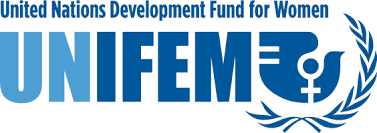Location
The United Nations Development Fund for Women, commonly known as UNIFEM (from the French "Fonds de développement des Nations unies pour la femme") was established in December 1976 originally as the Voluntary Fund for the United Nations Decade for Women in the International Women's Year. Since 1976 it has supported women’s empowerment and gender equality through its programme offices and links with women’s organizations in the major regions of the world. Its work on gender responsive budgets began in 1996 in Southern Africa and has expanded to include East Africa, Southeast Asia, South Asia, Central America and the Andean region. It has worked to increase awareness throughout the UN system of gender responsive budgets as a tool to strengthen economic governance in all countries.
In January 2011, UNIFEM was merged into UN Women, a composite entity of the UN, with International Research and Training Institute for the Advancement of Women (INSTRAW), Office of the Special Adviser on Gender Issues (OSAGI), and Division for the Advancement of Women (DAW).
Members:
Resources
Displaying 1 - 5 of 9Drylands: Sustaining Livelihoods and Conserving Ecosystem Services. A policy brief based on the Sustainable Management of Marginal Drylands (SUMAMAD) project
The drylands of the world occur on every continent, covering some 41% of the terrestrial surface. One third
of humanity inhabits these harsh degrading landscapes, eking out a living through adaptive processes that
have served them well until recent increases of land degradation. Growing pressures from population growth,
Sustainable management of marginal drylands: New insights on managing drylands
The second phase of the Sustainable Management of Marginal Drylands (SUMAMAD-2) project began in 2009 following a preparatory meeting on the project held on 3–6 June 2008 in Amman and the Dana Biosphere Reserve, Jordan, and was hosted by the Royal Society for the Conservation of Nature (RSCN). The extended SUMAMAD-2 to other world regions included South America (Bolivia) and Africa (Burkina Faso).
Sustainable management of marginal drylands:Using science to promote sustainable development. Project findings from Northern Africa to Asia
The world’s drylands are among the most vulnerable ecosystems on our planet. Desertification and land degradation are affecting huge land areas, jeopardizing the livelihoods of millions of people. Unsustainable management practices in dryland cultivation and pastoralism have given rise to widespread soil erosion, reduction of the biological production of soils, reduction of vegetation cover, and depletion of surface and groundwater resources.
Sustainable management of marginal drylands. Proceedings: Fourth Project Workshop Islamabad Pakistan 27-31 January 2006
The conference reviewed the current state-of-knowledge of dryland ecosystems; it identified important knowledge gaps for defining future paths of research into drylands; and it commemorated fifty years of dryland research in the UN system in the context of the International Year of Deserts and Desertification. The conference - in a cross-cutting manner - also addressed issues related to research and science needed for dryland conservation, policy options for sustainable dryland development, and necessary interventions and
Sustainable management of marginal drylands(SUMAMAD). Proceedings of the Third Project Workshop Djerba,Tunisia 11–15 December 2004
Millennium Development Goal Number Seven is particularly concerned with the safeguarding and provision of freshwater resources to all human.beings; this is a major challenge – and perhaps even the main challenge – for all the world’s drylands. SUMAMAD project aims at the sustainable management of marginal drylands, where the scarcity of water imposes restrictions for the productivity of each particular ecosystem. It is needed therefore to look into the entire water complex so as to promote a wise and sustainable water use. However,


